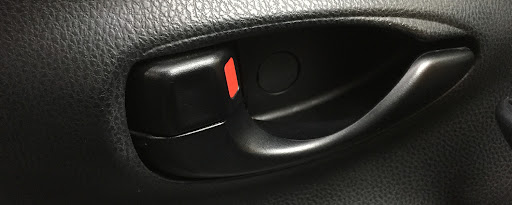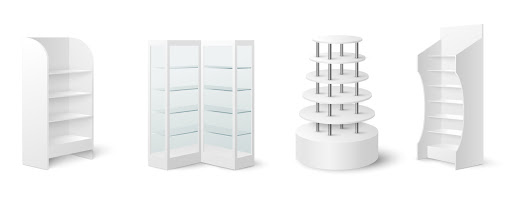Time to read: 9 min
Some of the products in our world are brand new—they’re the things we “didn’t know we needed,” the innovations that ramp up our experience of life a few notches. You know, like the Internet, the iPhone, and now all those Internet of Things things. Plenty of other products are age-old, traditional, ubiquitous. We also can’t live without them, but they’ve been around so long it’s hard to imagine what else can possibly be improved.
One such item is the speaker. As in, the box that amplifies the sound of an audio recording or file, and lets you rock along with it. We haven’t seen any significant improvements in speaker technology in a while… till now.
We sit down with Jesper Theil Thomsen, co-founder of SOUNDBOKS, to riff on speaker design, efficiency, and revolutionizing a product that’s as much a part of our social fabric as the music it broadcasts.
First, a Little Context
Why, you might ask, would you possibly want a large, heavy speaker to have to carry around instead of your earphones, or a medium-size speaker you can just zip up in your backpack? The SOUNDBOKS isn’t exactly small: it measures 26 x 17 x 13 inches and weighs in at 32 pounds. That’s like carrying around a toddler. (And like a toddler, the SOUNDBOKS also has a strong voice, although you have full control over that.)
Well, simply put, the SOUNDBOKS is for outdoor parties. Festivals. BBQ’s. Jam sessions in the park. Anywhere or any-what that needs good, strong music to set the mood.
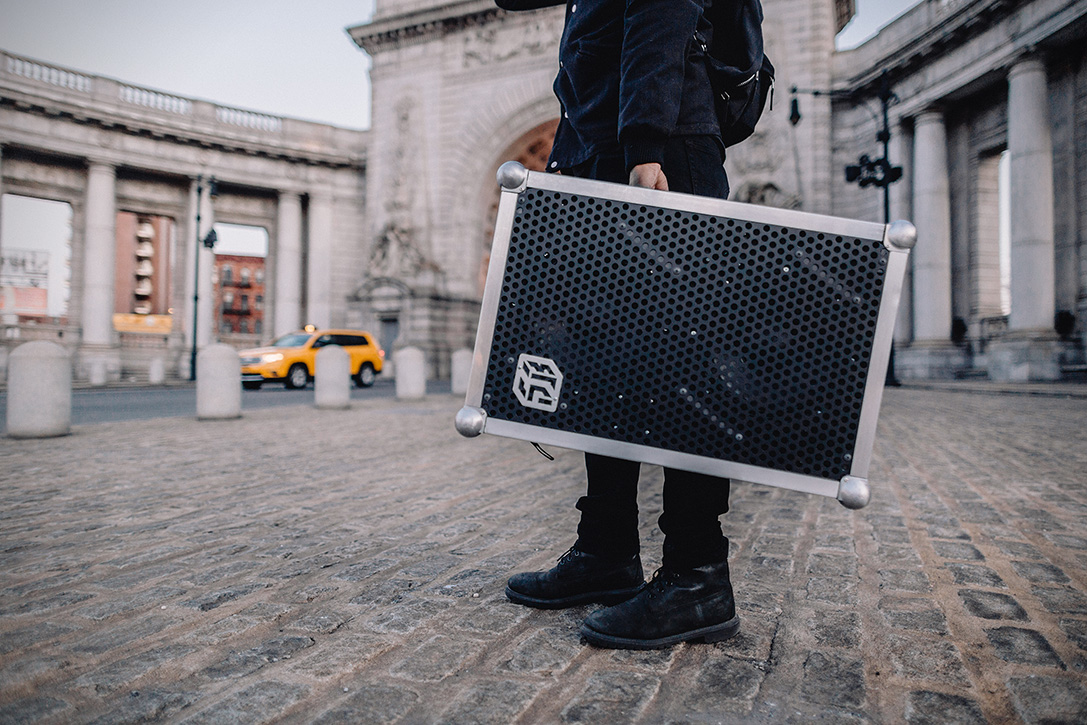
“This is for that time before the concert, to get into the mood,” says Jesper, “as well as after the concert.” Fans love to sing along with their favorite stars live, so why wait till the band shows up?
A Passion Sprouts Early
The founders have a little experience with outdoor music sessions—they’ve been going to festivals practically all of their lives. “Across Europe,” explains Jesper, “especially in the north, like Austria, Denmark, Germany, the Netherlands, Sweden, the UK, and also Switzerland, the live music festival scene is huge. Also here in the U.S., the festival attendance is growing every year.”
In Europe, the DIY speaker community is huge. In Denmark especially, it’s a verifiable tradition. The SOUNDBOKS crew have been building speakers since they were 16 years old—and, as Jesper shares, they “got quite good at it. People started asking us to make speakers for them.”
Without any engineering background or education, they apparently learned to build these speakers just by reading articles online. But what’s really impressive about the company is how young its founders are. Not early-thirties young. No not even mid- to late-twenties young. As Jesper tells it, “we graduated from high school in 2014.”
(For those not familiar with the Gregorian calendar, that would be two years ago.)
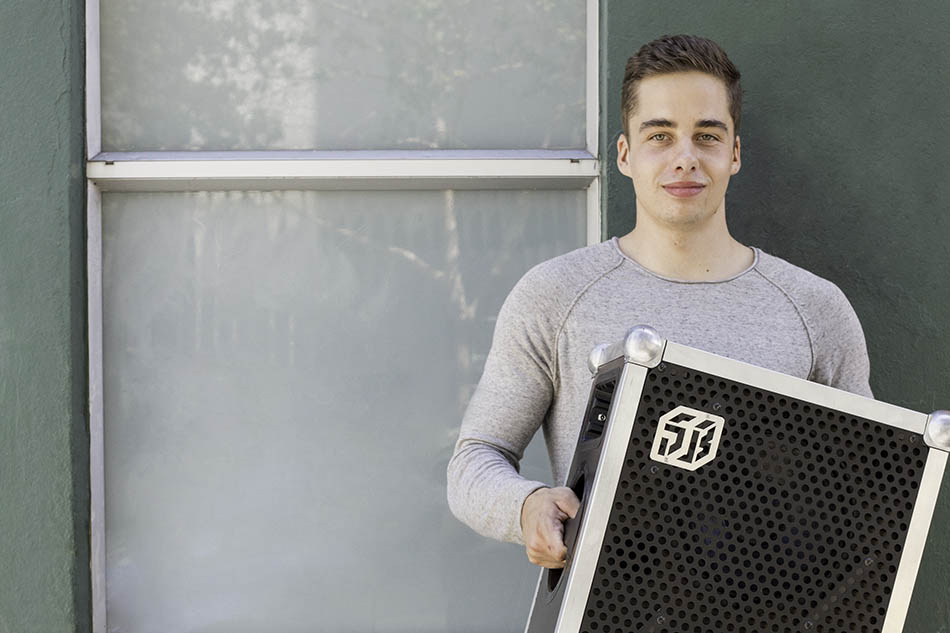
In their senior year, Jesper says, the guys “put up an ad in the Danish version of Craigslist, and got 200 orders. Then we saved up money for six months, working full time till January 2015, and launched the company in March. By ourselves. The first year we sold 400 speakers, and then we knew we could go international.”
The team (Jesper Theil Thomsen, Hjalte Emilio Wieth, and Christoffer Nyvold) checked out Y Combinator in Silicon Valley, got inspired, applied, and got in. “So, we’re also here in California now,” smiles Jesper.
From the Festival Circuit into the Boardroom
But with great industry interest comes great responsibility. When you decide to turn a hobby into a marketable product, suddenly you’ve got a whole lot more to deliver on. And what can pass if you’re tinkering with a hobby, can mushroom into a major headache for users in the pro version.
“We learned a lot when we built that first version (the one that sold 400 units),” says Jesper. “First, it wasn’t weather-resistant. Second, the way the battery door opened wasn’t well designed, you could actually break it off. We also messed up the design of a reflex port on the back of the speaker.” That was after the speakers were manufactured and delivered to their office. And that meant fixing the diameter of the port—by hand—in every last one of those 400 units.
More pain: “We forgot that people do step on and destroy cables. So everyone broke their cables last year.”
Then, the battery failed in the summer heat.
What doesn’t kill your product, makes it stronger, as they say. The team wasted no time in revving up for version 2. They started with on-the-ground feedback.
“We talked to a lot to people about what they liked, what they didn’t,” says Jesper. And that feedback turned into valuable insights.
“We developed our own amplifier. The electronics are actually 60 percent amplifier and 40 percent motherboard. Before, we had six different PCBs, but in the next version we made them into one. We took off everything that could break off the speaker, like the battery door, and redesigned it so it either slides or locks in and can’t break off. We made it water-resistant.”
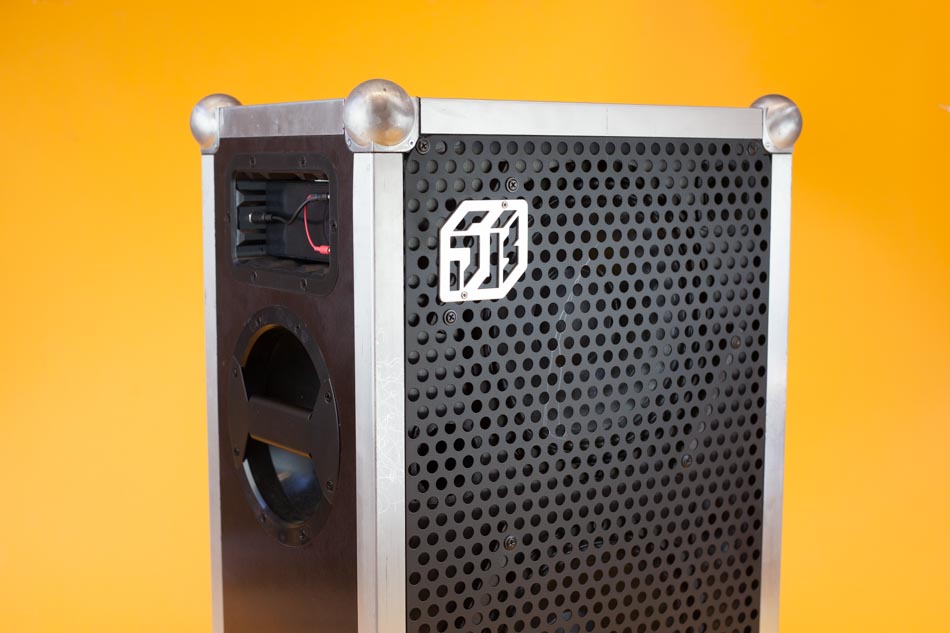
The team also added Bluetooth capability and a more robust auxiliary cable. When we ask what they did differently, Jesper waves it away as no big deal: “It’s just a case of using a better, more expensive supplier.”
They also made the corners much larger, and flush-mounted everything. Meaning, all the external elements are flush with the wooden frame of the speaker, creating a clean, sophisticated design.
“The key about the development of this speaker, is that most companies just follow the cheapest way to manufacture a product. We wanted to build the best, highest quality and the most durable speaker we could. Whatever it cost.”
Most importantly, beams Jesper, the speaker is greener than just about any other comparable product out there. “Long battery cycle time means we can use a lot fewer batteries.” The amplifier is also much more energy-efficient than most other comparable speakers on the market, and the wood is FSC-certified.
Improving On What’s Already Good
So what exactly is so special about SOUNDBOKS, and is any of what Jesper and his team did truly innovative?
There are three ways SOUNDBOKS improves upon existing technology:
- An extremely efficient amplifier
- Highly sensitive speakers
- Acoustic design
So let’s get into it.
1. Efficient amplifier
Jesper confidently says, “We can play music louder than a nightclub on less power than you use to charge your iphone.” It’s true: SOUNDBOKS uses around 3,328 wH of power to play 113 dB. For reference, an iPhone uses 5 wH. Certainly impressive, but why does it matter, other than if you’re worried about power consumption? The implications are bigger than you think (see next section).
2. Sensitive speaker units
SOUNDBOKS uses highly sensitive speaker units that require a surprisingly low amount of power to reach high volumes. For comparison, consider that speakers like the Devialet Phantom require a lot of power to play at high volume, while SOUNDBOKS speakers can get up to 40 dB louder with the same amount of power.
3. Acoustic design
This refers to the way the speaker produces and distributes sound, which is basically pulses of air. The cabinet design of SOUNDBOKS allows the maximum amount of air to be pushed out through a relatively small space. “We made the frequency nice and smooth, to avoid crazy spikes,” says Jesper. See “How loud is loud?” below to find out why this matters.
But let’s get back to the efficiency point.
Now, About That Power
If cables were the nemesis of the 80’s (and 90’s, and 00’s, and…), batteries are the undoing of the mobile generation. Use one too many apps, download one too many emails, or play a few too many songs on your smartphone, and soon you’re out of juice. And smartphones are a small device. How are you going to power a large party speaker like the SOUNDBOKS with a battery?
Right now, explains Jesper, the people powering up festivals and concerts run miles and miles of cables. Generators need to be brought in. “The market lacks a good battery solution.”
SOUNDBOKS uses no cables. Its battery takes three hours to fully recharge, but then you get 30 hours out of it. As in, THREE-ZERO. That’s unheard of.
“A speaker battery cannot use massive amounts of power,” says Jesper. “So the challenge is making the entire speaker system, from the efficiency of the amplifiers to the sensitivity of the speakers, function well on low power. That’s why our engineering is so good—because we get massive amounts of sound out of lower power,” he adds, making sure to credit Johnny Engberg, the company’s lead engineer.
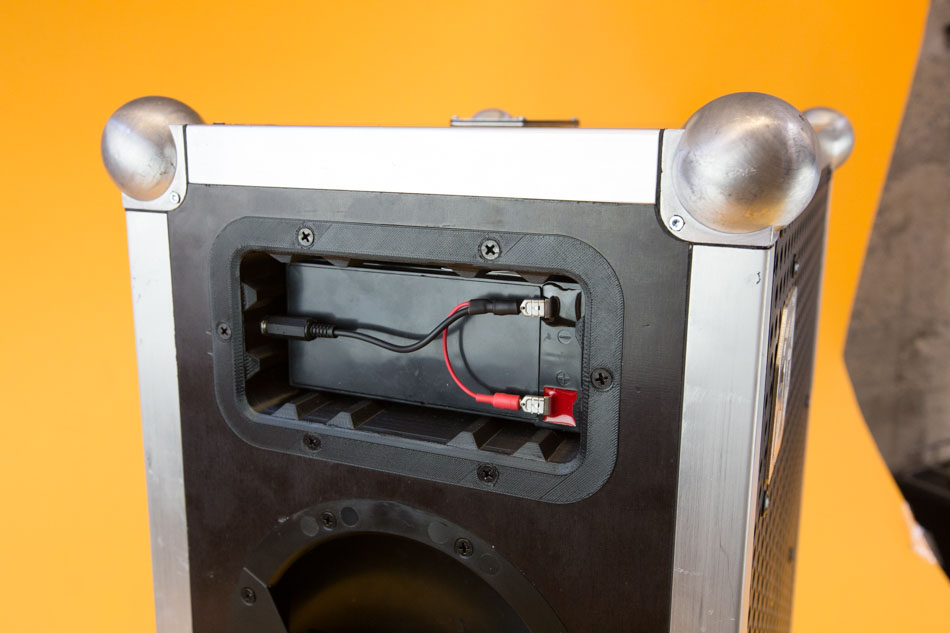
So how do they do it?
Jesper shares that the usual Lithium ion batteries not only don’t last as long as a rock concert, they also can’t handle extreme temperatures. He and his team wanted people in Alaska as well as the Sahara desert to enjoy good music outdoors. “So now we use lithium iron phosphate, which is incredibly temperature resistant—it can handle temps from -20°C to +60°C. We want the speakers to last an entire lifetime. A lithium ion battery lasts 500 cycles, while lithium iron phosphate lasts between 2 to 4,000 cycles. It’s out on the market already, just not widely used in consumer electronic products because it’s more expensive.”
More expensive, yes, but SOUNDBOKS isn’t about cheap quality. It’s also greener, adds Jesper. “It’s more expensive but it’s greener in just about every way.”
Gotta Protect Your Tunes
As anyone who’s ever gone to a concert or sporting event knows, things can get a bit rowdy. But really, what’s the worst that can happen to a speaker? Don’t people just dance around it?
Jesper shakes his head knowingly. “We’ve seen people pour beer on their speakers. They also jump on them.”
The festival scene, it turns out, is the perfect battleground for product testing—and that’s why the SOUNDBOKS is built to withstand a military onslaught (practically). “We wanted to build a speaker perfect for every occasion, and festivals are the most extreme events,” says Jesper.
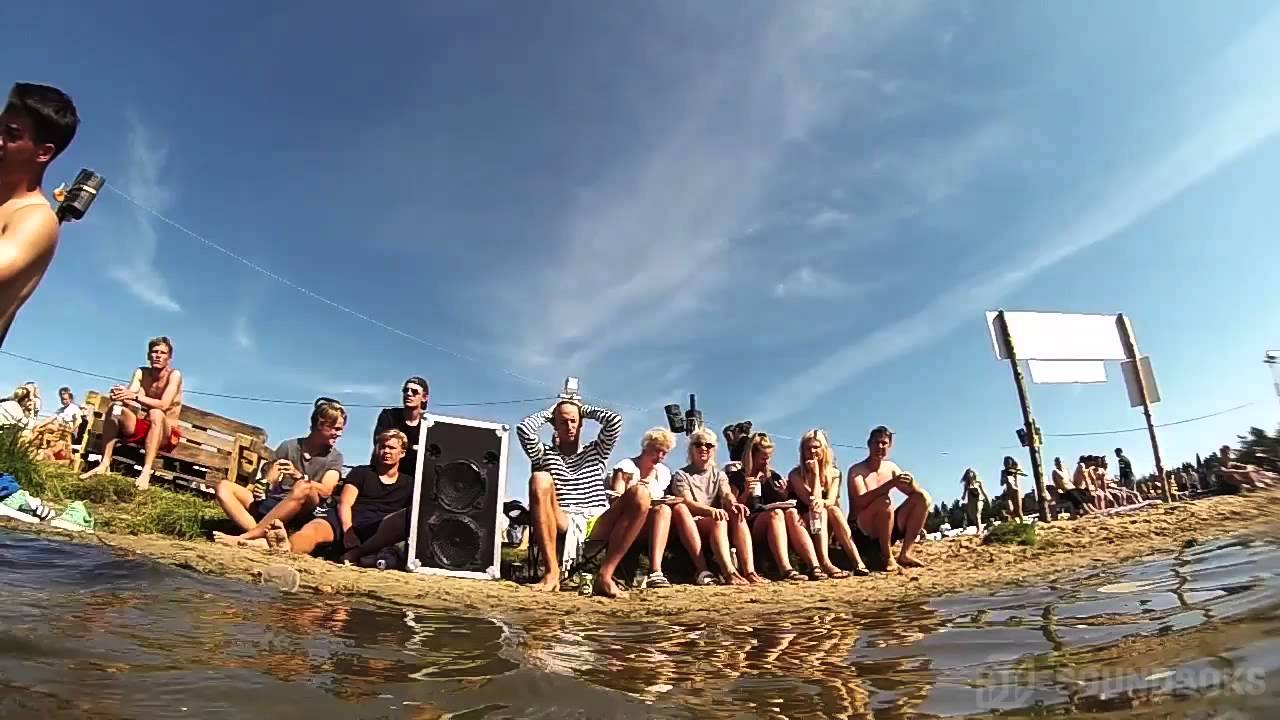
Probably the most critical order of operations was to make it water-resistant so people can party literally anytime, anywhere.
“We water coated every part of the speaker that could possibly get damaged,” says Jesper. (Translation: they coated the parts with silicon and PCP to make them water-resistant.)
How Loud is Loud?
Yeah, the SOUNDBOKS is LOUD. Up to 119 decibels loud. That’s louder than the average PA system at a rock concert.
Problem for the neighbors? Could be. Problem for your eardrum? Depends on how high you turn it up and how close you get to it. As with anything of this nature, it’s the user’s responsibility to gauge how and when to use a SOUNDBOKS. If you know the coffee’s hot…
Jesper confesses he’s blown out his ears at concerts too. “People need to be smart enough not to put their ears right next to the speaker.” But he knows it’s also easy to forget about things like that when you’re in the throes of an awesome concert or party, and that’s why the team is doing all they can to soften the auditory impact of their speaker.
That’s where the acoustic design we mentioned above comes in. “We said, how can we avoid disturbing people a mile away? So we made the speaker go out on a wider audio range—so relative to its volume, the sound doesn’t travel as far. We also removed the frequencies where distortion is inevitable, and that gives you a better listening experience, not to mention being better for your hearing.”
A Future Small and Big All at the Same Time
No successful company can possibly sit on its speakers… er, laurels, and SOUNDBOKS knows that. But they never have.
“We were very entrepreneurial from the start,” says Jesper. “We realized [early on] there are a lot of people who want good outdoor speakers. We are considering more products down the road, but for now, our priority is to enter as many relevant markets as possible.”
Their early success notwithstanding, SOUNDBOKS might have a bit of a long road ahead, given the fact the speaker is much more expensive to manufacture. But if music fans everywhere have their way, SOUNDBOKS’ dedication to quality and the environment—not to mention their hot new speaker technology—might just help change the industry’s mind.
